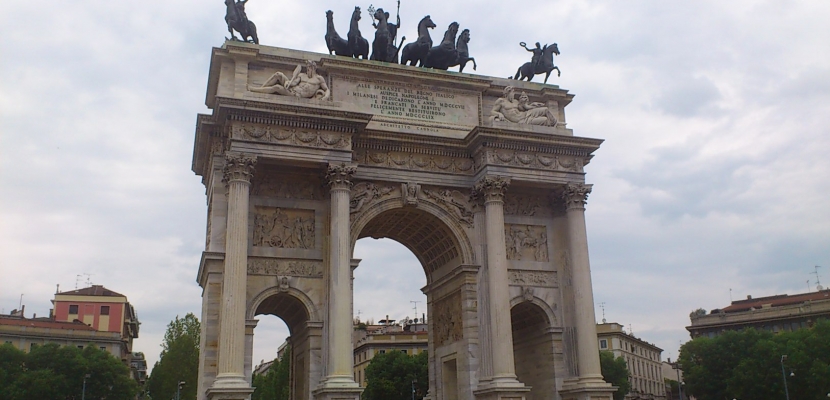
In 1805, Napoleon Bonaparte It transforms its Italian Republic, also known as the Cisalpine Republic, into the Kingdom of Italy. He proclaimed himself king on May 26 of that same year in the Duomo and gave the capital to Milan. A time when the French general covers the Lombard capital with glory and monuments. Many of them are today some of the main attractions of this city, hence they are essential visits.
Starting with the Peace Arch, Luigi Cagnola's architectural masterpiece. It was built in the neoclassical style in 1807 (its works were completed by the Austrians in the 30s of the XNUMXth century) to celebrate Napoleon's arrival in the city and it is the only example of a triumphal arch that we can see in Milan. We continue for the Civic Arena, built between 1805 and 1807 by the architect Luigi Canonica. A neoclassical stadium that was used for the celebration of numerous events and sports competitions.
Another of the great monuments of the time is the Sforzesco Castle. There one of the most elegant courts in Italy met with Francesco Sforza and Ludovico el Moro. At the end of the XNUMXth century it was frequented by artists and intellectuals. At the beginning of the XNUMXth century, Napoleon ordered the demolition of the walls that surrounded this castle to erect the Foro bonaparte, a series of monumental buildings that were to surround the fortress. Everything came to nothing, perhaps due to time or the excessive costs of the operation.
On August 15, 1809, on the occasion of his fortieth birthday, Napoleon inaugurated the Brera Picture Gallery, one of the most important museums in the city. The building in which it is located emerged as a convent of the Order of the Humiliated. Years later, and thanks to Maria Teresa of Austria, it became the seat of some of the most interesting cultural institutions in Milan. In the center of its courtyard there has been the sculpture "Napoleon as Mars the Peacemaker" since 1859, a bronze work by Richini and commissioned in 1807 by Eugene de Beauharnais, Napoleon's own stepson.
Finally we must mention the Royal Villa, family residence of the viceroy Eugene de Beauharnais. This elegant building from the end of the 5th century had as distinguished guests Joaquín Murat, Carolina Bonaparte or Marshal Radetzky, who died in it on January 1858, XNUMX. Today it houses different collections of modern art.